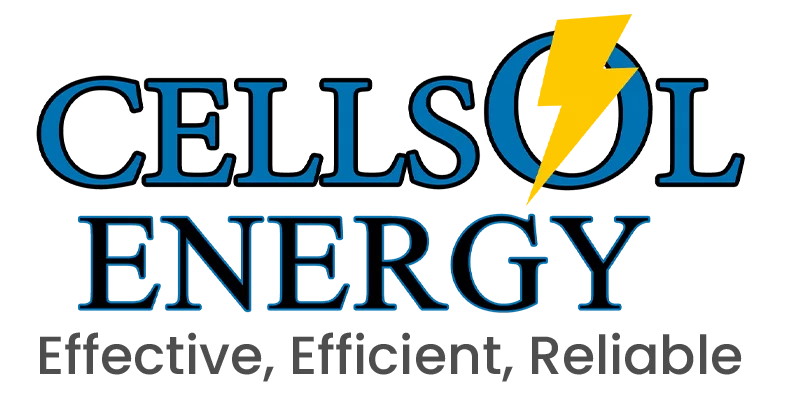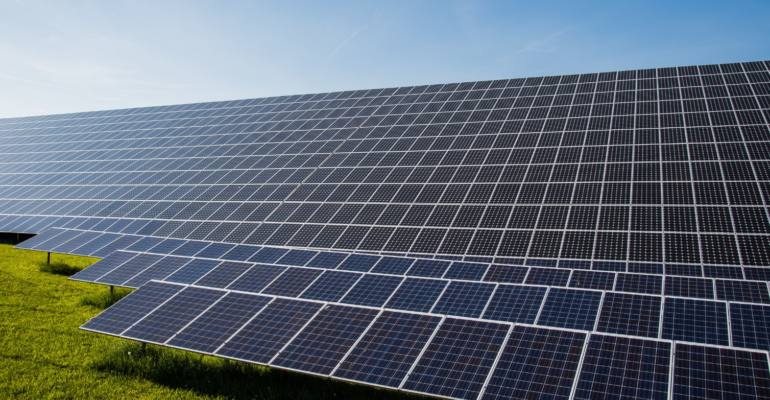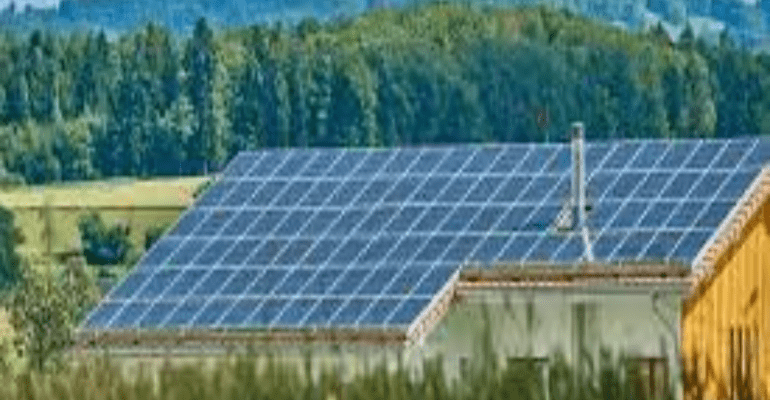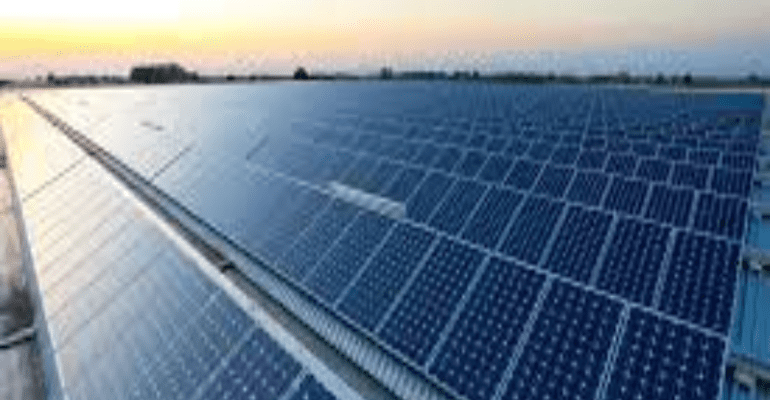Toll Free: +92-0311-17778-65
Archive for March 27th, 2023
Common Myths and Misconceptions About Solar Energy
Common Myths and Misconceptions About Solar Energy Solar energy has been growing in popularity as a source of renewable energy. However, there are still several myths surrounding solar energy that may be preventing people from fully embracing its potential. In this article, we will explore some of the most common solar energy myths and separate fact from fiction. Myth #1: Solar panels are too expensive This is one of the most common myths about solar energy. While it is true that solar panels were quite expensive a decade ago, the cost of solar has dropped significantly in recent years. In fact, solar panels are now more affordable than ever, and the cost continues to decrease every year. Moreover, solar energy has become an affordable option for homeowners due to federal and state incentives and financing options. Myth #2: Solar panels don’t work in cold or cloudy weather Solar panels work by converting sunlight into electricity. While it is true that solar panels perform best in direct sunlight, they still work on cloudy days and in cold weather. In fact, some studies have shown that solar panels can actually be more efficient in colder temperatures. Additionally, solar panels do not need direct sunlight to work, but only daylight. Therefore, they can still produce energy even on cloudy days. Myth #3: Solar panels require too much maintenance Another myth surrounding solar energy is that solar panels require a lot of maintenance. In reality, solar panels require very little maintenance, as they have no moving parts. The only maintenance required is occasional cleaning to ensure that the panels are free of dust and debris. Moreover, most solar panel manufacturers offer warranties of 20-25 years, which means that the panels will be functioning well for decades. Myth #4: Solar panels are not aesthetically pleasing Some people are concerned that solar panels are unsightly and will detract from the appearance of their home or building. However, modern solar panels are designed to be sleek and visually appealing. Moreover, solar panels can be integrated into the design of a building or home, or even installed on a separate structure such as a carport or pergola. Myth #5: Solar energy is unreliable One of the biggest myths surrounding solar energy is that it is unreliable. Some people believe that solar energy is not consistent because it only works when the sun is shining. However, solar energy systems can be designed to store excess energy produced during the day for use at night or on cloudy days. Additionally, the reliability of solar energy has been proven in many countries, including Germany, where solar energy accounts for a significant portion of the country’s energy mix. Myth #6: Solar panels are only for sunny states Contrary to popular belief, solar energy can be harnessed in almost any state in the US, including those with colder climates or more overcast weather. In fact, some states with lower levels of sunlight, such as New York and New Jersey, have some of the fastest-growing solar energy markets. Additionally, solar energy can be used to power homes and buildings in rural areas that are not connected to the grid. Myth #7: Solar panels are bad for the environment This myth may be based on the misconception that solar panels are made with toxic materials or that their manufacturing process is highly polluting. However, solar panels are made from silicon, which is abundant and nontoxic. The manufacturing process for solar panels has also become much cleaner in recent years, with many companies using renewable energy to power their production facilities. Myth #8: Solar panels decrease property value Some people may be concerned that installing solar panels on their home or building will decrease its value. However, studies have shown that homes with solar panels actually sell for more than homes without solar panels. Moreover, solar panels can be considered an attractive feature for Bottom of Form.
Solar Energy for Agriculture: Improving Efficiency and Sustainability
Solar Energy for Agriculture: Improving Efficiency and Sustainability As the world continues to grapple with the challenges of climate change, there is an increasing need for sustainable solutions that can help mitigate its impacts. One such solution that is gaining popularity is agrivoltaic solar panels. Agrivoltaics, also known as dual-use solar systems, are an innovative way of integrating solar panels into agricultural lands, allowing farmers to harness the benefits of both solar energy and agriculture. What are Agrivoltaic Solar Panels? Agrivoltaic solar panels are photovoltaic (PV) solar panels that are installed on agricultural lands. The panels are elevated above the ground to allow crops to grow underneath them. The panels provide shade to the crops, which can help reduce water evaporation and protect them from extreme weather conditions such as hailstorms. The panels also reduce soil erosion by acting as a barrier against wind and heavy rainfall. How do Agrivoltaic Solar Panels Work? Agrivoltaic solar panels work by harnessing the sun’s energy to produce electricity while allowing crops to grow underneath. The panels are typically installed on a raised structure, which allows for airflow and provides shade to the crops. The panels are tilted at an angle to maximize the amount of sunlight they receive, and the excess electricity produced is fed into the grid or stored in batteries. Benefits of Agrivoltaic Solar Panels There are several benefits of agrivoltaic solar panels, including: Increased crop yield: Studies have shown that crops grown under agrivoltaic solar panels can have higher yields due to the shade provided by the panels, which can help reduce water stress and increase photosynthesis. Reduced water usage: The shade provided by agrivoltaic solar panels can also help reduce water evaporation, which can help farmers save water and reduce their water bills. Renewable energy: Agrivoltaic solar panels provide a source of renewable energy that can help reduce greenhouse gas emissions and mitigate the impacts of climate change. Reduced land use: By integrating solar panels into agricultural lands, farmers can maximize their land use efficiency and reduce the amount of land needed to produce both food and energy. Diversified income streams: Agrivoltaic solar panels can provide farmers with an additional source of income by allowing them to sell excess electricity back to the grid. Challenges of Agrivoltaic Solar Panels While agrivoltaic solar panels offer many benefits, there are also some challenges that need to be addressed. These include: Initial installation costs: The upfront cost of installing agrivoltaic solar panels can be high, which may deter some farmers from adopting the technology. Maintenance costs: Agrivoltaic solar panels require regular maintenance, which can be costly and time-consuming. Compatibility with crops: Not all crops are compatible with agrivoltaic solar panels, and farmers need to choose crops that can thrive in the shade provided by the panels. Regulatory barriers: There may be regulatory barriers that prevent farmers from installing agrivoltaic solar panels, such as zoning laws and land-use regulations. Case Studies Despite the challenges, agrivoltaic solar panels are gaining popularity around the world. In Japan, agrivoltaic solar panels have been installed on rice paddies, where they have been shown to increase rice yields by up to 40% while reducing water usage by 75%. In the United States, a vineyard in California has installed agrivoltaic solar panels, which have helped reduce water usage by 33% while producing enough energy to power the entire vineyard. Conclusion Agrivoltaic solar panels offer a promising solution to the challenges of climate change and sustainable agriculture. By integrating solar panels into agricultural lands, farmers.
The Future of Solar Technology: Emerging Trends and Innovations
The Future of Solar Technology: Emerging Trends and Innovations The Future of Solar Technology: Advancements and Opportunities for Clean Energy Solar technology has come a long way in recent years, and the future of solar technology looks even brighter. As the world looks for more sustainable energy sources, solar energy has emerged as a promising solution. Solar technology has become more efficient, affordable, and accessible, and the future of solar technology looks even more promising. Solar energy has been used for centuries, but it has only been in the last few decades that solar technology has become commercially viable. The cost of solar panels has decreased significantly, making it an affordable option for businesses and households alike. In addition, advances in technology have made solar panels more efficient, making them capable of producing more energy in less time. The future of solar technology looks even more promising with the emergence of new materials and designs. For example, researchers are exploring the use of perovskite, a promising material that has shown great potential for use in solar cells. Perovskite solar cells are more efficient than traditional silicon-based solar cells, and they are also cheaper to manufacture. Another promising development in solar technology is the use of thin-film solar cells. Thin-film solar cells are flexible, lightweight, and can be applied to a variety of surfaces, including windows and walls. This makes them ideal for use in urban areas, where space is at a premium. The future of solar technology is not just about improving the efficiency and affordability of solar panels. It is also about integrating solar energy into our existing infrastructure. This includes developing smart grids that can manage the flow of energy from solar panels, wind turbines, and other renewable energy sources. It also includes developing energy storage solutions that can store excess energy generated by solar panels during the day and release it during peak demand periods. One of the most promising opportunities for solar technology is in the transportation sector. Electric vehicles (EVs) are becoming more popular, and solar technology could help power them. For example, solar panels could be integrated into the roofs of EVs, allowing them to recharge while parked. This would extend the range of EVs and reduce the need for traditional charging infrastructure. The future of solar technology is also about making solar energy more accessible to everyone. This includes developing microgrids that can provide electricity to remote and underserved communities. It also includes developing portable solar panels that can be used to power devices in areas without access to electricity. There are also opportunities for solar technology in space. Solar panels are already used to power satellites, but there is potential for them to be used to power space missions. For example, solar sails could be used to propel spacecraft through space, using the energy from the sun. Despite the many opportunities for solar technology, there are still challenges that need to be addressed. One of the biggest challenges is the intermittency of solar energy. Solar panels only produce energy during the day when the sun is shining, and this energy must be stored for use at night or during periods of low sunlight. Developing effective energy storage solutions is crucial for the future of solar technology. Another challenge is the need for more efficient and sustainable manufacturing processes for solar panels. The production of solar panels can be resource-intensive and generate a significant amount of waste. Developing more sustainable manufacturing processes will be important for the future of solar technology. In conclusion, the future of solar technology looks bright. Advancements in materials, designs, and infrastructure are making solar energy more efficient, affordable, and accessible. Solar technology has the potential to revolutionize the way we generate and use energy, and it could play a critical role in addressing the challenges of climate change. The development of sustainable and efficient solar technology should be a top priority for governments, businesses, and individuals around the world. By investing in solar technology, we can create a more sustainable and prosperous future for generations to.
Top 5 solar energy companies in Lahore
Top 5 solar energy companies in Lahore As Pakistan looks towards a sustainable future, solar energy has emerged as a key player in the energy mix. Lahore, the cultural capital of Pakistan, has been at the forefront of this shift towards renewable energy. In this article, we will take a closer look at the top 5 solar energy companies in Lahore, which are driving this change and transforming the energy landscape of the city. Premier Energy Premier Energy is one of the top solar energy companies in Lahore and has been providing clean energy solutions for residential, commercial, and industrial clients since 2013. The company offers a wide range of solar products, including solar panels, inverters, batteries, and mounting structures. Premier Energy also provides installation and maintenance services, making it a one-stop-shop for all solar energy needs. With a commitment to quality, innovation, and customer satisfaction, Premier Energy has become a leading player in the solar energy sector in Pakistan. The company has installed over 100MW of solar power across the country and has received numerous awards and certifications for its exceptional work. Nizam Energy Nizam Energy is another top solar energy company in Lahore that is dedicated to providing sustainable energy solutions for homes, businesses, and communities. Founded in 2013, the company has a team of experienced engineers and technicians who design, install, and maintain solar systems of all sizes. Nizam Energy offers a range of solar products, including solar panels, inverters, and batteries, and specializes in off-grid and hybrid solar systems. The company also provides energy auditing and consultancy services to help clients optimize their energy consumption and reduce their carbon footprint. Reon Energy Reon Energy is a leading solar energy company in Lahore and has been providing turnkey solar solutions for over a decade. The company offers a range of services, including design, installation, commissioning, and maintenance of solar systems for residential, commercial, and industrial clients. Reon Energy has a strong commitment to sustainability and has installed over 300MW of solar power across Pakistan. The company has also received several awards and certifications for its exceptional work, including the International Safety Award from the British Safety Council. SolarSigma SolarSigma is a Lahore-based solar energy company that specializes in providing innovative and sustainable energy solutions for homes, businesses, and industries. The company offers a range of solar products, including solar panels, inverters, batteries, and monitoring systems, and provides installation and maintenance services. SolarSigma has a team of skilled engineers and technicians who design and install customized solar solutions to meet the unique needs of each client. The company also offers financing options to make solar energy more accessible and affordable for everyone. Premier Solar Premier Solar is a Lahore-based solar energy company that provides high-quality solar products and services for residential, commercial, and industrial clients. The company offers a range of solar products, including solar panels, inverters, batteries, and mounting structures, and provides installation and maintenance services. Premier Solar has a team of experienced professionals who design and install customized solar solutions to meet the specific needs of each client. The company also provides energy auditing and consultancy services to help clients optimize their energy consumption and reduce their energy bills. Conclusion: As Lahore looks towards a sustainable future, these top 5 solar energy companies are leading the way in transforming the energy landscape of the city. With their commitment to quality, innovation, and customer satisfaction, these companies are providing sustainable and affordable energy solutions for homes, businesses, and industries. Whether it’s Premier Energy’s wide range of solar products or Nizam Energy’s expertise in off-grid and hybrid solar systems, these companies are paving the way towards a brighter and cleaner future. So, if you’re looking to
Search
Categories
Popular Tags
Subscribe Us
Subscribe us & get
latest news & articles to inbox.




